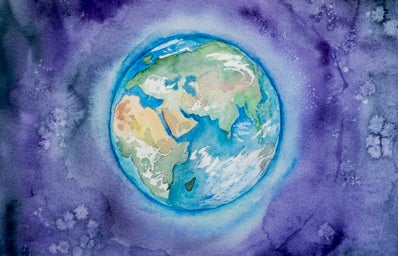The art you consume drastically shapes your worldview. But not all art is an equal and fair depiction and the consumption of unbalanced art can create misconceptions.
The concept of orientalism was coined by academic Edward Said in his book “Orientalism”. Orientalism can be defined as “othering” a culture by characterizing it as exotic. Said explained that orientalism is a “western style for dominating, restructuring, and having authority over the Orient”.
In short, this is the process Western societies often use to place themselves above the societies they colonize.
Orientalism has greatly influenced the Arab world with one academic explaining that “the construction of the Middle East is deeply embedded in Orientalist discourses.” Both the term Middle East and the physical construction of the Middle East were created under an orientalist mindset. Many academics argue that orientalism is so entwined with the Arab world that it is not certain where or what the Middle East even is.
As with any thought process orientalism has deeply infiltrated art and media with a lack of accurate Arab representation being prevalent. The Middle East Institute states that even just the term “Arab Art” “creates a fabricated homogenous ‘Arab culture’ that undermines the reality of a diverse region.” The Arab World is composed of vastly different languages, religions, cultures, food and people. By compiling all Arab art together with no differentiation, the common misconception that all Arabs look and act the same is reinforced.
On top of a forced hegemony, the art displayed from the Arab world is often an outdated depiction of a modernized society. The Arab art that is frequently shown often consists of calligraphy and bazaars or solely represents Islamic art. Although these factors are still important to display, a lack of any representation of the contemporary Arab world can create grave misconceptions.
There is also just a general lack of Arab art in museums and galleries. With Arab artists sparingly being highlighted and often the only time to see Arab art being in specific museums dedicated to the Arab world.
However, in order to combat these misconceptions many small galleries are devoting exhibits solely to modern Arab artists. In Washington, D.C. there is the Middle East Institute gallery that has had various exhibits showcasing contemporary artists in the Arab world. The current exhibit is Between the Sky and the Earth: Contemporary Art from the UAE and ends March 31. There is also the Museum of the Palestinian People that has both virtual and in-person opportunities to view Arab artists.
Beyond paintings the contemporary experience of Arab people is displayed through diverse music, tv shows, and films. In order to dismantle oriental thought processes consumption of various Arab media is necessary. Listening to hip hop groups such as DAM or watching films such as Gaza mon Amour or Detroit Unleaded give more accurate depictions of a contemporary Arab world.


